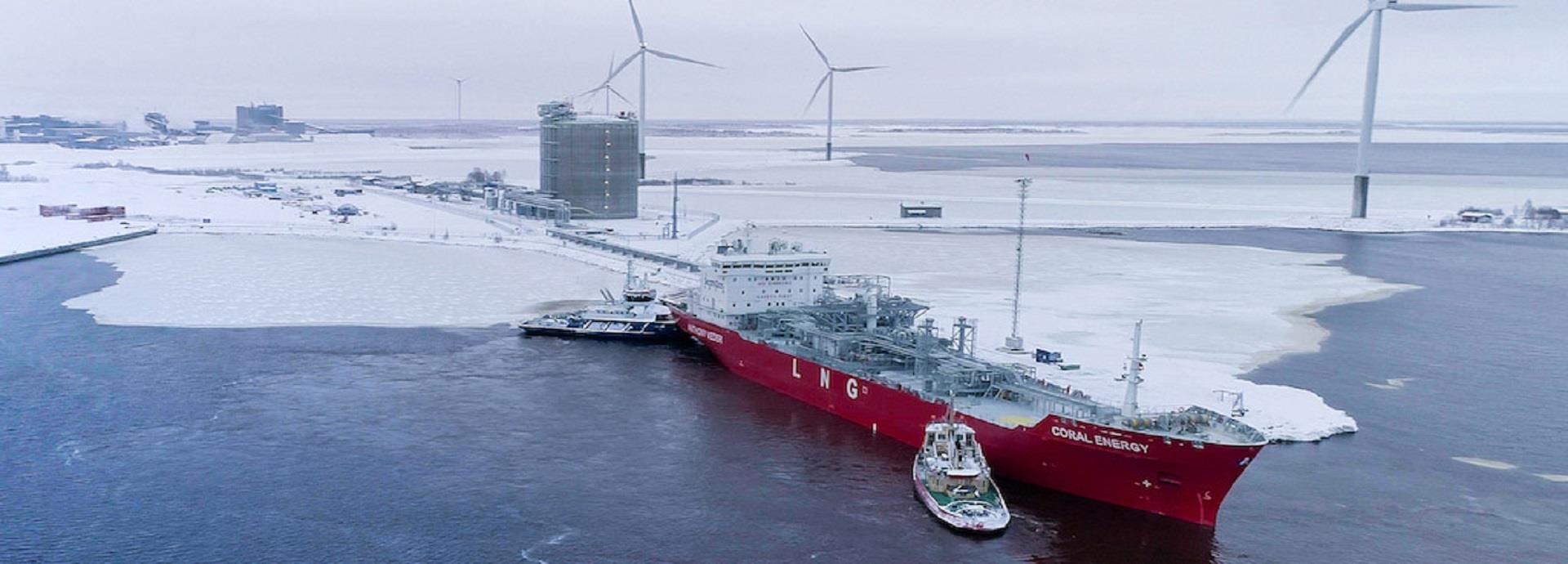

There is a quiet revolution going on and it is spot on. The revolution in question concerns the commoditisation of LNG and how a dramatic market shift is affecting the procurement of LNG, especially in northern Europe.
Commoditisation is what happens when an exclusive product becomes, over time, desirable and affordable to many – where distribution networks are built to accommodate smaller parcels of a product as they are made available to more and more people.
Traditionally, LNG has been an option only for customers that can accept a full cargo from huge ships that transport it across the oceans. Projects were built on long-term contracts, up to 20 years, with customers for large volumes of LNG. With the surge
of shale gas production in the US, LNG is flowing into the market to the tune of an annual capacity of 50 million tonnes by 2020, as reported by Reuters in March 2018. The flexibility offered by US producers has accelerated the development of more
mature LNG markets.
Developing a spot market
According to John Reinlund, Strategy and Business Development, LNG Solutions at Wärtsilä, who follows these developments closely, the LNG landscape is evolving.
“LNG is going through a similar commoditisation process as the oil markets did during the previous century. LNG buyers are signing shorter and smaller contracts and the customer group is becoming more diverse,” says Reinlund.
“The share of spot deliveries, for example, single cargoes for delivery in the near future, has been growing and is now about 25%, which reflects the fact that the market is evolving. The LNG market is still illiquid compared to oil, with traders only recently grabbing more of the market. However, LNG is on a path to becoming a commodity. This includes increasing flexibility in small- and mid-scale LNG. Trucking of LNG is already quite common,” he explains.
For small- and mid-scale projects, it is not economically feasible to transport LNG long distances. Additionally, there haven’t been many liquefaction plants and LNG terminals that could, or would, accept small-scale vessels. The normal in this scale of operations has been to have only one or a few potential suppliers.
“The result of all this is that we are starting to see a spot market for small-scale LNG deliveries developing. In Northern Europe, small-scale LNG has reached a critical mass thanks to the International Maritime Organization’s emission rules
and investment support from the European Union. Additionally, owners have had the foresight to design the infrastructure with the right kind of flexibility. Large-scale terminals are starting to see economic potential in investing in break-bulking
capabilities to supply LNG in smaller lots for regional distribution,” says Reinlund.
Expansion of gas
Some examples include GATE in the Netherlands, Zeebrügge in Belgium, and the floating storage and regasification unit (FSRU) in Lithuania that are competing for a place in the market with the large-scale terminals in Poland, the UK, and France in the second wave. Liquefaction plants that are capable of loading small-scale vessels already exist in Norway and will soon in Russia. Additionally, the small-scale terminals on the Finnish and Swedish coastline have either been designed for, or are contemplating, reloading capabilities. All of this creates flexibility in the system. Another enabling factor is the availability of small-scale LNG carriers and bunkering vessels that offer excess capacity.
“Maybe we can’t call it a fully functioning small-scale LNG spot market according to a trader’s definition, but the fact that there are enough suppliers on the market for customers to choose from has made it possible to purchase single cargoes. For small- and mid-scale projects, strict Take-Or-Pay clauses in the LNG contracts can be problematic, but now you can make up the balance with spot cargoes, just as in the large-scale world,” says Reinlund.
When asked where this could happen next, Reinlund says, “The western Mediterranean already has all the ingredients on the supply side, but there are fewer small- and mid-scale customers in that region. The Caribbean might just beat them to it.
Naturally, the landscape of building new LNG terminals around the seven seas is a complex and expensive task with huge compliance and technical challenges. It goes without saying that Wärtsilä has all the technical know-how and infrastructure expertise to help its customers in this field.

